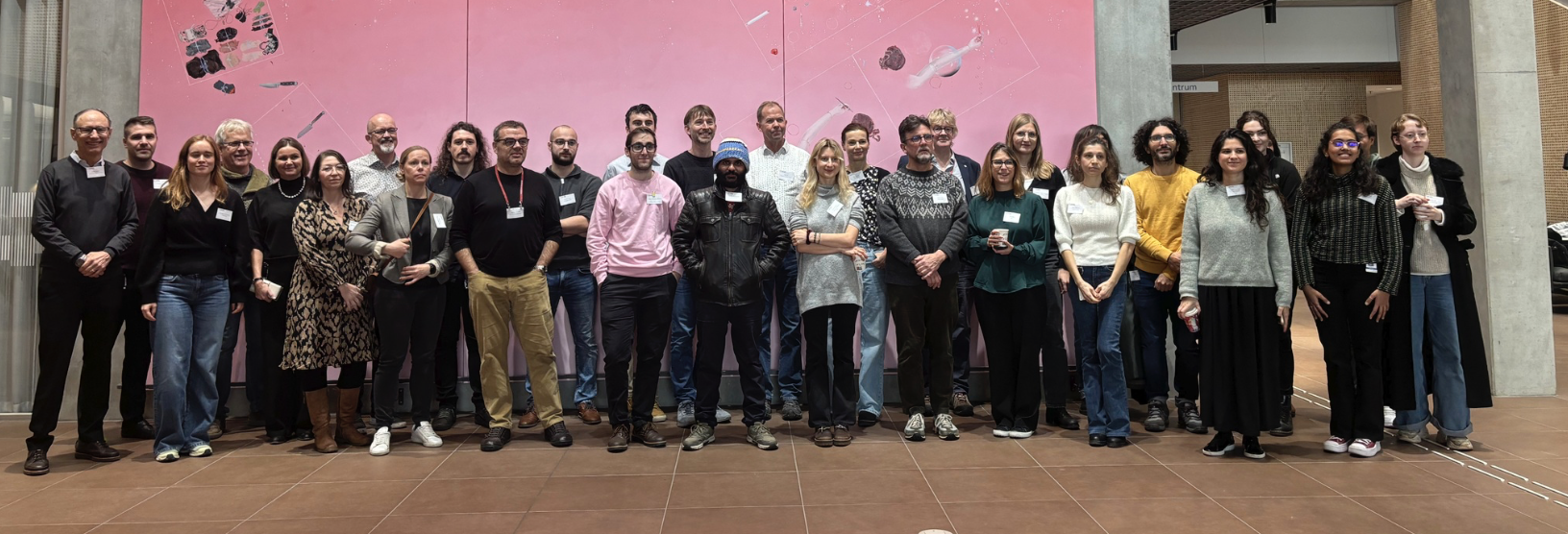Looking forward, not back – the IPDD theme’s final conference
Participants and theme members at the IPDD final conference in Lund in November 2024.
In late November, the Integrative Pharmacology and Drug Design, IPDD, theme hosted its very final event: on the theme of scattering and imaging in understanding and treating disease. It gathered theme members and researchers from different research groups in Sweden and Denmark.
– The closing meeting was amazing! It reflected some of the most interesting methods and science we have been focusing on within the theme, says theme leader, Karin Lindkvist, Professor at Medical Structural Biology, Lund University.
Karin Lindkvist was leader for the IPDD theme and is a Professor at Medical Structural Biology, Lund University.
The conference had a strong clinical focus, with talks aiming to inspire researchers to apply X-rays, neutrons and electrons to gain further knowledge on topics connected to various aspects of pharmacology, drug design and delivery. Each of the theme’s four working groups, focusing on structure-based drug design; macromolecular drugs – antibodies; biomedical imaging; and biophysics of drug delivery had invited speakers whose science represented key challenges, advances and opportunities connected to their work.
They spoke on topics such as The Human Organ Atlas: using synchrotron radiation for understanding human anatomy; Antibodies - Nature's and our approach to, through stochasticity and design, develop protection; Understanding enzymatic mechanisms to develop genome editing tools using electrons and X-rays, and Strategies for fragment- and structure-based drug discovery.
The great potential of visualization
For Karin Lindkvist, the meeting highlighted the power of X-rays, neutrons and electrons to visualize and shed light on key challenges within science connected to drug design and delivery. They include how to develop drugs that get to the place where they are needed in the body while avoiding side effects to non-diseased organs; developing therapies that can be administered in high doses without causing pain to the patient; and achieving targeted and controlled drug release. Many of the talks presented powerful visualizations generated from experiments at large scale X-ray and neutron facilities.
– The methods we have used within our theme enables us to see how diseases develop and to track various drug designs in real time. Being able to generate these powerful and detailed visualizations is quite new and shows how good the techniques have become in the short time since our theme started.
Among the conference participants, the various visualizations also created a stir, especially the project the Human Organ Atlas. It uses hierarchical phase-contrast tomography to image human anatomy from the micron to whole organ scale.
– It was quite unusual to see people so in awe of how one can visualize the human body. It underscores how the act of seeing clinical disease processes on different scales, can lead on to new ways to not only understand, but also design, research.
Many collaborations will continue
Karin Lindkvist is hopeful that many of the collaborations forged during the theme’s duration at LINXS will continue. Some people are already working together in LINXS new theme, Advanced Imaging and Data Analysis, AIDA.
She is glad that the IPDD theme succeeded in establishing a platform for discussion, collaboration and science on integrative pharmacology, drug design and delivery.
– It is important to not leave research on drug design or drug delivery only to biotech industry. We need strong research settings to develop more effective drug candidates, not least ways to circumvent animal models with mice and zebra fish since these models are quite different from the human system.
– LINXS has enabled us to make important steps to develop this type of research. We have had opportunity to connect with research groups in other parts of Sweden and Denmark, forming networks which we can now leverage for other research projects and grants, says Karin Lindkvist.


